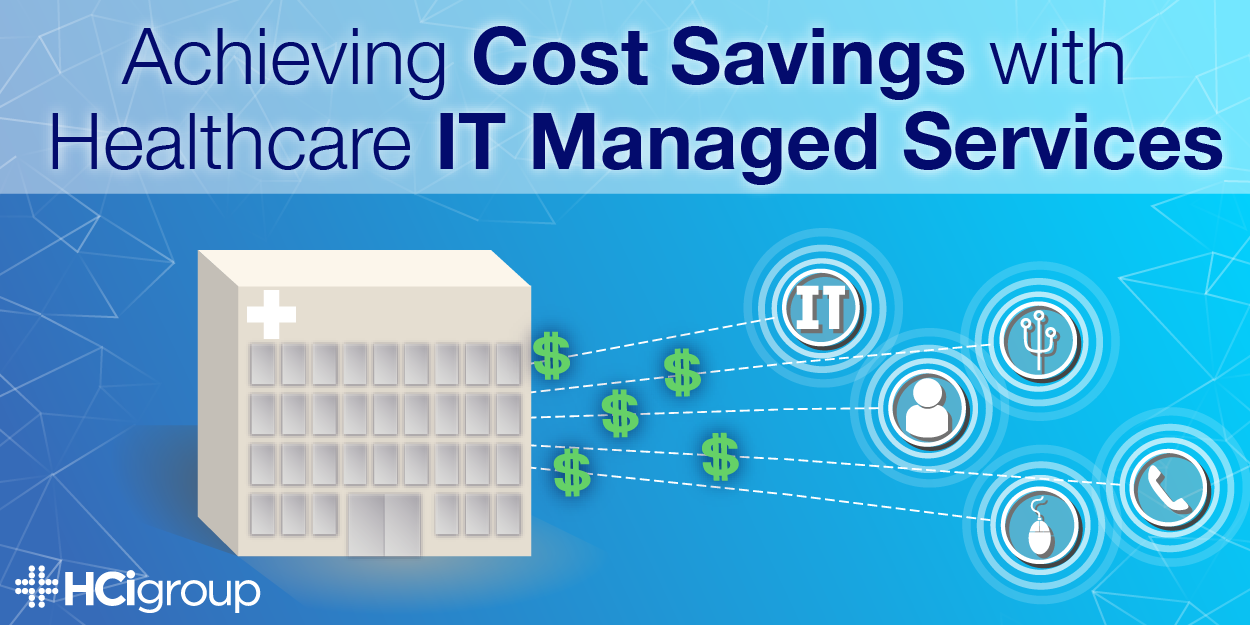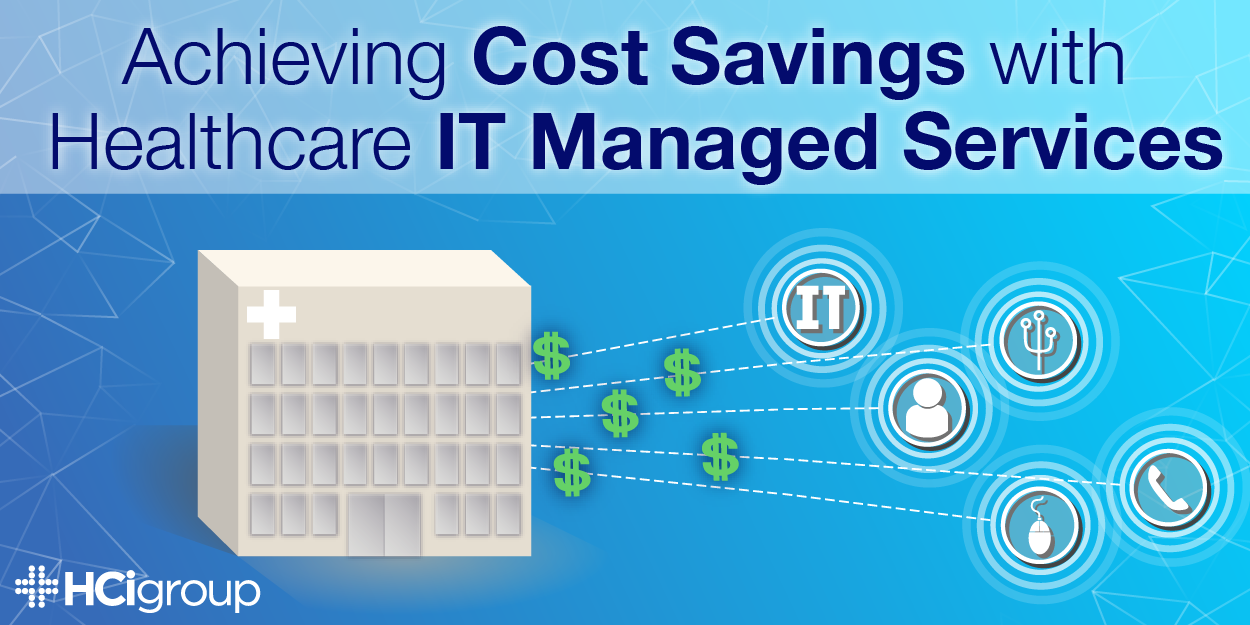Achieving Cost Savings with Healthcare IT Managed Services

Is your current healthcare IT solution the most cost effective option for your current budget?
The use of Healthcare Information Technology (HIT) solutions can present great advantages and can produce many challenges for CIO’s. Healthcare IT professionals all know that HIT has made a tremendous impact on the delivery of healthcare services, both from a provider and a patient perspective.
The opportunities to deliver efficient, cost-effective, high quality solutions with increased safety and accountability utilizing HIT solutions are goals we all aspire achieve.
In this post, Ken Bradberry - SVP of Managed Services Operations and Innovation gives his perspective on the problems, support and solutions surrounding healthcare IT managed services.
Healthcare IT Challenges
The reality is these HIT projects come with large investments, operating costs and significant time and effort to implement and operate. Finding ways to reduce the cost of ownership and drive returns on investment in the form of higher availability, dependability and accuracy with existing or even reduced staff are all challenges healthcare CIO’s are facing today.
The goal of this blog post is to explore opportunities to reduce cost, while not just maintaining existing quality but increasing it as well. Our mission in Healthcare IT is to empower our caregivers with the technology tools that help them provide the best possible outcomes to their patients.
The technologies available to healthcare have grown significantly over the past five years, outpacing the investments made in new EMR solutions and the infrastructure. We are expected to work smarter, not harder, with budgets that continue to challenge the CIO to maximize investments. There are several technologies that, if deployed to the right areas of IT, can provide cost efficiencies while helping to increase quality. The cost saving approach we will discuss in this blog post focuses on infrastructure and applications managed services.
HIT Managed Services Partner
Healthcare organizations exploring managed services are looking for a trusted resource to transfer the responsibilities of technology and infrastructure with greater efficiencies, reduction in operating costs and improved services. If the managed services solution is poorly designed, without a focus on people, process and technology, or a lack of experience with your core healthcare IT requirements, you may be at risk of not realizing the benefits. Healthcare requires a well-balanced and effective managed service provider that can apply the right technology tools, disciplined processes and empower people to be more efficient and effective while meeting established SLA’s.
HIT Managed Services Leads to Stability
The key pillars that support today’s healthcare IT use the classic approach focused on people, process and technology requirements. CIO’s who are tasked with managing these pillars can have significant challenges with cost, expertise and work effort when implementing processes like ITIL, and implementing technology tools that support the IT environment and managing people.
For example, when staffing challenges arise, staff augmentation models have been the go-to solution in the past when IT departments looked to overcome short term capability challenges or a way to deal with hiring restrictions and budget issues. This is a temporary strategy and does have advantages depending on your circumstances; however, staff augmentation models can become challenged if it becomes a permanent arrangement. As a long-term solution, the benefits are reduced due to increased costs and the loss of domain knowledge control.
The challenges faced by healthcare organizations looking to manage services to implement an efficient and highly optimized practice within their healthcare organization can be overwhelming. It is important to understand how managed services can have a positive impact elevating the stability of hospital operations to the level of a utility service – it is always available and performing.
Modeling for Success
To be successful, the managed services provider partnership must execute on the basics with a structured and accountability-based model. At the core of managed services is a delivery model rooted in enterprise practices with a pragmatic, stable and well managed infrastructure.
Your managed service partner should have a strong understanding of your strategic goals and objectives, whether it’s managed IT, business process, or core healthcare services. The operational model should be rooted in a predictable, highly structured delivery model that is innovative, agile, modernized and ready for the future needs of the healthcare organization.
If you would like to learn more about this topic or get a deeper understanding, read more about HCI's Infrastructure Management Services offerings.


